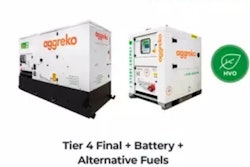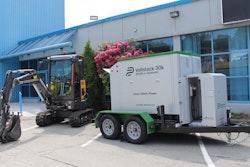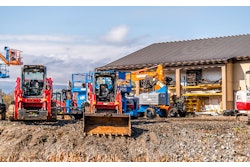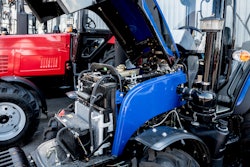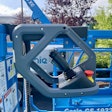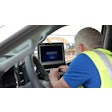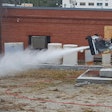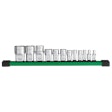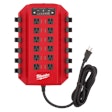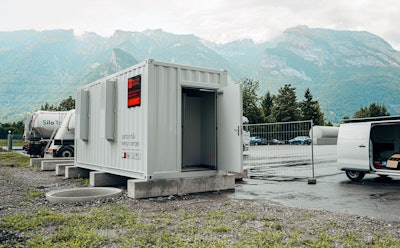
Battery technology company e.battery systems is contributing to the energy transition taking place on construction sites with its innovative second-life energy storage systems (ESS). After a development and pilot phase of around 18 months, the technology company, based in Wolfurt (Austria), is now launching its first systems based on lithium-ion batteries from electric and hybrid vehicles.
This recycling solution extends the life of batteries by around 10 years as well as reducing costs by 30% and material consumption by 70% in comparison with new systems.
Energy storage systems provide a reliable way to enable autonomous operation using power generated from clean production means such as photovoltaics and wind/hydro power.
"Sustainable products are the basis for tomorrow's circular energy economy. With our modular systems, we offer optimized solutions for a wide range of industrial applications," said Christopher Schöpf, founder and CEO of e.battery systems. The capacity of the storage systems ranges from 260 kilowatt hours to several megawatt hours. Intelligent charging and discharging management ensures top efficiency.
The storage solution uses 19-in. server cabinets that can be flexibly scaled for inside and outside spaces. For outside applications, IP-certified server cabinets are used, or standard server cabinets are installed in 10-, 20- and 40-ft. containers.
The modular solution allows the storage systems to reach capacities of 800 kWh (10-ft.), 2 MWh (20-ft.) and 4.7 MWh (40-ft.). In addition to self-consumption optimization, the systems implement peak shaving and support the charging infrastructure.

e.battery systems.
"Often, the power grid cannot provide the power required for the public charging infrastructure. Storage systems like ours can help with this. Each system supplies a power of 67.5 kW and can be expanded on a modular basis." said e-battery systems project manager Nikolai Abel.
The storage systems also offer protection against power outages and blackouts. In combination with other systems, they are also suitable for 50 Hz grid frequency stabilization and overload management.
IRONPROS Perspective
Demand for e-battery system’s ESS is expected to increase in the coming years, as the initial waves of electric and hybrid vehicles start to mature and degrade in performance.
Electric vehicle batteries have a general lifespan of eight to 15 years. Vehicle manufacturers measure coverage based on miles driven and charge capacity. For example, Tesla offers an eight-year battery warranty and coverage between 100,000 and 150,000 miles for specific electric vehicles.
Consider that it takes approximately 10 to 12 months for drivers to rack up 100,000 miles. Based on these figures, we can see there would be plenty of used electric vehicle batteries floating around ready for second-life uses. Higher supply of used lithium-ion batteries would lower costs for the company to build ESS.
To qualify for second-life applications, the EV batteries do not have to be in a failed state. As long as they don’t meet EV performance standards, EV owners can opt to replace them with a new unit. Used lithium-ion EV batteries can still be functional and operate at more than 60% capacity when installed in an ESS.
